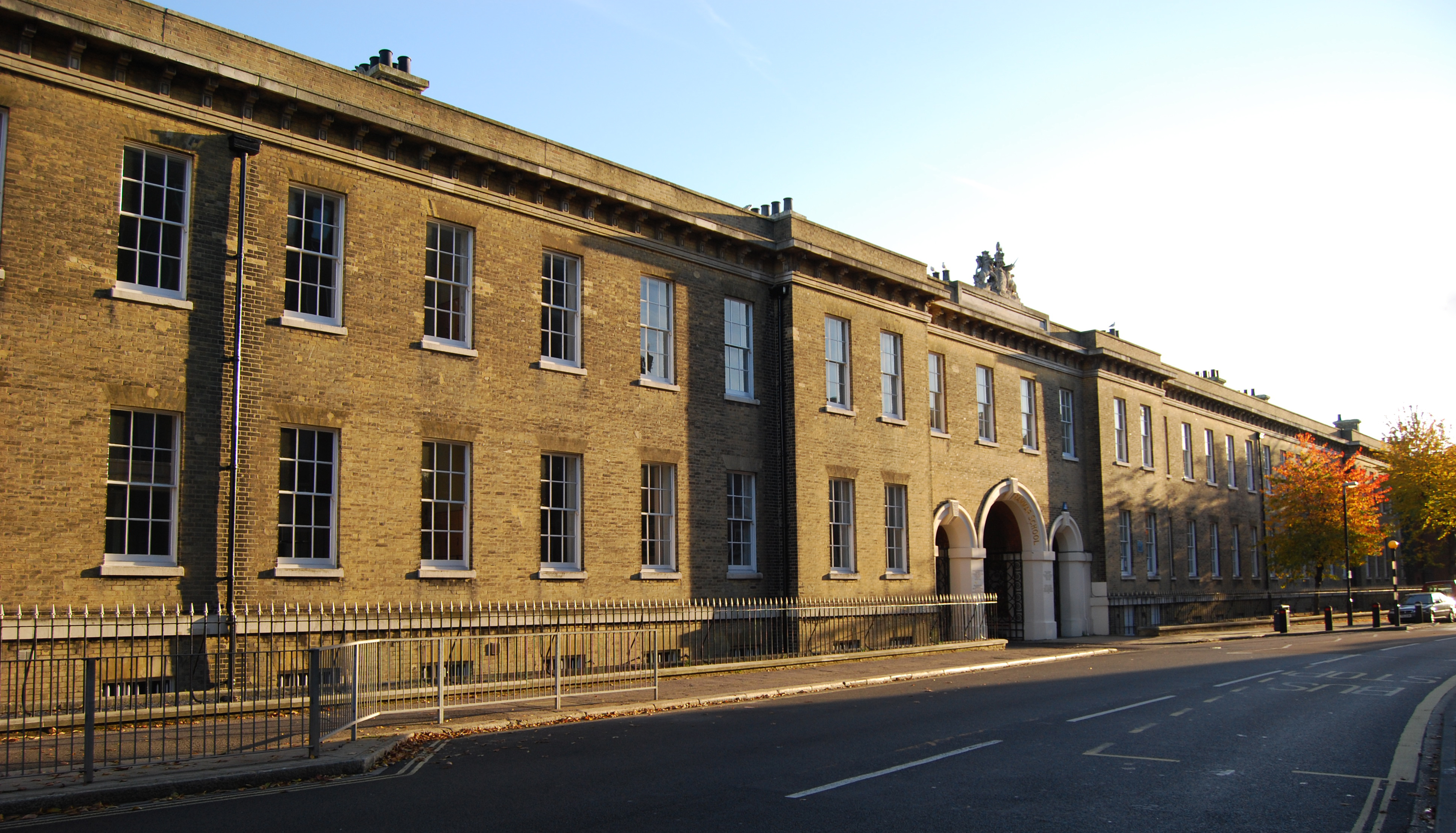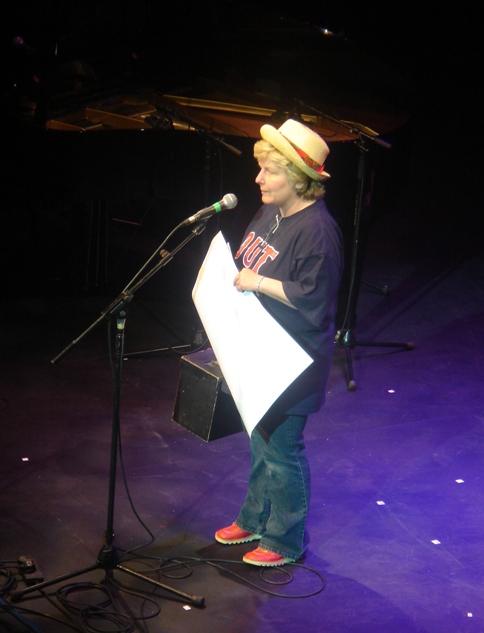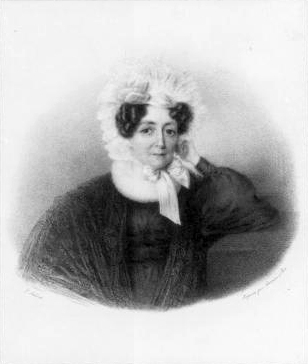|
New Theatre Royal
The New Theatre Royal is a Victorian Grade II* listed theatre in the heart of Portsmouth, England, with a capacity of 667. The theatre building was constructed in 1854 as Landport Hall. It was converted to a theatre two years later. It was rebuilt in 1884 by Charles J. Phipps and again in 1900 by Frank Matcham. The Theatre reopened in October 2015 after a £4.7M refurbishment project. History Dickens and early theatre in Portsmouth The present site was built to replace a theatre located in the High Street (now designated "old Portsmouth". The theatre features in Charles Dickens' novel ''Nicholas Nickleby''. A popular music hall, it hosted performances by Niccolò Paganini and Franz Liszt and Mr Keane the leading actor manager of the early nineteenth century. It closed in 1854 and was demolished in 1856 with a number of other buildings to allow for the construction of a military establishment, the Cambridge Barracks. This building now houses Portsmouth Grammar School, a ... [...More Info...] [...Related Items...] OR: [Wikipedia] [Google] [Baidu] |
Portsmouth
Portsmouth ( ) is a port and city in the ceremonial county of Hampshire in southern England. The city of Portsmouth has been a unitary authority since 1 April 1997 and is administered by Portsmouth City Council. Portsmouth is the most densely populated city in the United Kingdom, with a population last recorded at 208,100. Portsmouth is located south-west of London and south-east of Southampton. Portsmouth is mostly located on Portsea Island; the only English city not on the mainland of Great Britain. Portsea Island has the third highest population in the British Isles after the islands of Great Britain and Ireland. Portsmouth also forms part of the regional South Hampshire conurbation, which includes the city of Southampton and the boroughs of Eastleigh, Fareham, Gosport, Havant and Waterlooville. Portsmouth is one of the world's best known ports, its history can be traced to Roman times and has been a significant Royal Navy dockyard and base for centuries. Portsm ... [...More Info...] [...Related Items...] OR: [Wikipedia] [Google] [Baidu] |
Portsmouth Grammar School
The Portsmouth Grammar School is a co-educational independent day school in Portsmouth, England, located in the historic part of Portsmouth. It was founded in 1732 as a boys' school and is located on Portsmouth High Street. History In 1732, William Smith, a former Mayor of Portsmouth and previously the garrison physician, died and left his estate to Christ Church, Oxford. His will contained instructions to build a new school in Portsmouth and thus, The Portsmouth Grammar School (PGS) was founded. The will of the founder is reflected to this day in that two Governors continue to be nominated by Christ Church. The school also retains its naval links, with the Second Sea Lord nominating one further Governor. In 1926 the school moved from its Victorian premises to Cambridge Barracks. The school was hit by bombs during the Second World War. In 1976, with the removal of the Direct Grant, it stopped being a grammar school under the Tripartite System, though kept the term as part ... [...More Info...] [...Related Items...] OR: [Wikipedia] [Google] [Baidu] |
Grade II* Listed Theatres
Grade most commonly refers to: * Grade (education), a measurement of a student's performance * Grade, the number of the year a student has reached in a given educational stage * Grade (slope), the steepness of a slope Grade or grading may also refer to: Music * Grade (music), a formally assessed level of profiency in a musical instrument * Grade (band), punk rock band * Grades (producer), British electronic dance music producer and DJ Science and technology Biology and medicine * Grading (tumors), a measure of the aggressiveness of a tumor in medicine * The Grading of Recommendations Assessment, Development and Evaluation (GRADE) approach * Evolutionary grade, a paraphyletic group of organisms Geology * Graded bedding, a description of the variation in grain size through a bed in a sedimentary rock * Metamorphic grade, an indicatation of the degree of metamorphism of rocks * Ore grade, a measure that describes the concentration of a valuable natural material in the surrounding ... [...More Info...] [...Related Items...] OR: [Wikipedia] [Google] [Baidu] |
Grade II* Listed Buildings In Hampshire
The county of Hampshire is divided into 13 districts. The districts of Hampshire are Gosport, Fareham, Winchester, Havant, East Hampshire, Hart, Rushmoor, Basingstoke and Deane, Test Valley, Eastleigh, New Forest, Southampton, and Portsmouth. As there are 549 Grade II* listed buildings in the county they have been split into separate lists for each district. * Grade II* listed buildings in Basingstoke and Deane * Grade II* listed buildings in City of Winchester * Grade II* listed buildings in East Hampshire * Grade II* listed buildings in Eastleigh (borough) * Grade II* listed buildings in Fareham (borough) * Grade II* listed buildings in Gosport * Grade II* listed buildings in Havant (borough) * Grade II* listed buildings in Hart * Grade II* listed buildings in New Forest (district) * Grade II* listed buildings in Portsmouth * Grade II* listed buildings in Southampton * Grade II* listed buildings in Rushmoor * Grade II* listed buildings in Test Valley See also ... [...More Info...] [...Related Items...] OR: [Wikipedia] [Google] [Baidu] |
Buildings And Structures In Portsmouth
A building, or edifice, is an enclosed structure with a roof and walls standing more or less permanently in one place, such as a house or factory (although there's also portable buildings). Buildings come in a variety of sizes, shapes, and functions, and have been adapted throughout history for a wide number of factors, from building materials available, to weather conditions, land prices, ground conditions, specific uses, prestige, and aesthetic reasons. To better understand the term ''building'' compare the list of nonbuilding structures. Buildings serve several societal needs – primarily as shelter from weather, security, living space, privacy, to store belongings, and to comfortably live and work. A building as a shelter represents a physical division of the human habitat (a place of comfort and safety) and the ''outside'' (a place that at times may be harsh and harmful). Ever since the first cave paintings, buildings have also become objects or canvasses of much artistic ... [...More Info...] [...Related Items...] OR: [Wikipedia] [Google] [Baidu] |
Sandi Toksvig
Sandra Birgitte Toksvig (; ; born 3 May 1958) is a Danish-British writer, comedian and broadcaster on British radio, stage and television. She is also a political activist, having co-founded the Women's Equality Party in 2015. She has written plays, novels and books for children. In 1994, she came out as a lesbian. Toksvig took over from Stephen Fry as host of the BBC television quiz show '' QI'' in 2016 (series 'N'), having been a guest a number of times, and spent ten years hosting ''The News Quiz'' on BBC Radio 4. From 2017 to 2020 she was co-presenter of ''The Great British Bake Off'', alongside comedian Noel Fielding. In 2020, she stepped down and was replaced by Matt Lucas. Toksvig was the president of the Women of the Year Lunch from 2015 to 2017. Early life Toksvig was born in Denmark. Her father, Claus Toksvig, was a Danish journalist, broadcaster, and foreign correspondent; as a result, Toksvig spent most of her youth outside Denmark, mostly in New York City. Her mo ... [...More Info...] [...Related Items...] OR: [Wikipedia] [Google] [Baidu] |
Peter Maxwell Davies
Sir Peter Maxwell Davies (8 September 1934 – 14 March 2016) was an English composer and conductor, who in 2004 was made Master of the Queen's Music. As a student at both the University of Manchester and the Royal Manchester College of Music, Davies formed a group dedicated to contemporary music called the New Music Manchester with fellow students Harrison Birtwistle, Alexander Goehr, Elgar Howarth and John Ogdon. Davies’s compositions include eight works for the stage—from the monodrama ''Eight Songs for a Mad King'', which shocked the audience in 1969, to ''Kommilitonen!'', first performed in 2011—and ten symphonies, written between 1973 and 2013. As a conductor, Davies was artistic director of the Dartington International Summer School from 1979 to 1984 and associate conductor/composer with the Royal Philharmonic Orchestra from 1992 to 2002, holding the latter position with the BBC Philharmonic Orchestra as well. Early life and education Davies was born in Holly ... [...More Info...] [...Related Items...] OR: [Wikipedia] [Google] [Baidu] |
Dracula
''Dracula'' is a novel by Bram Stoker, published in 1897. As an epistolary novel, the narrative is related through letters, diary entries, and newspaper articles. It has no single protagonist, but opens with solicitor Jonathan Harker taking a business trip to stay at the castle of a Transylvanian nobleman, Count Dracula. Harker escapes the castle after discovering that Dracula is a vampire, and the Count moves to England and plagues the seaside town of Whitby. A small group, led by Abraham Van Helsing, hunt Dracula and, in the end, kill him. ''Dracula'' was mostly written in the 1890s. Stoker produced over a hundred pages of notes for the novel, drawing extensively from Transylvanian folklore and history. Some scholars have suggested that the character of Dracula was inspired by historical figures like the Wallachian prince Vlad the Impaler or the countess Elizabeth Báthory, but there is widespread disagreement. Stoker's notes mention neither figure. He found the name ''D ... [...More Info...] [...Related Items...] OR: [Wikipedia] [Google] [Baidu] |
Franz Liszt
Franz Liszt, in modern usage ''Liszt Ferenc'' . Liszt's Hungarian passport spelled his given name as "Ferencz". An orthographic reform of the Hungarian language in 1922 (which was 36 years after Liszt's death) changed the letter "cz" to simply "c" in all words except surnames; this has led to Liszt's given name being rendered in modern Hungarian usage as "Ferenc". From 1859 to 1867 he was officially Franz Ritter von Liszt; he was created a ''Ritter'' (knight) by Emperor Franz Joseph I of Austria, Francis Joseph I in 1859, but never used this title of nobility in public. The title was necessary to marry the Princess Carolyne zu Sayn-Wittgenstein without her losing her privileges, but after the marriage fell through, Liszt transferred the title to his uncle Eduard in 1867. Eduard's son was Franz von Liszt., group=n (22 October 1811 – 31 July 1886) was a Hungarian composer, pianist and teacher of the Romantic music, Romantic period. With a diverse List of compositions by Franz L ... [...More Info...] [...Related Items...] OR: [Wikipedia] [Google] [Baidu] |
Grade II*
In the United Kingdom, a listed building or listed structure is one that has been placed on one of the four statutory lists maintained by Historic England in England, Historic Environment Scotland in Scotland, in Wales, and the Northern Ireland Environment Agency in Northern Ireland. The term has also been used in the Republic of Ireland, where buildings are protected under the Planning and Development Act 2000. The statutory term in Ireland is "Record of Protected Structures, protected structure". A listed building may not be demolished, extended, or altered without special permission from the local planning authority, which typically consults the relevant central government agency, particularly for significant alterations to the more notable listed buildings. In England and Wales, a national amenity society must be notified of any work to a listed building which involves any element of demolition. Exemption from secular listed building control is provided for some buildin ... [...More Info...] [...Related Items...] OR: [Wikipedia] [Google] [Baidu] |
Niccolò Paganini
Niccolò (or Nicolò) Paganini (; 27 October 178227 May 1840) was an Italian violinist and composer. He was the most celebrated violin virtuoso of his time, and left his mark as one of the pillars of modern violin technique. His 24 Caprices for Solo Violin Op. 1 are among the best known of his compositions and have served as an inspiration for many prominent composers. Biography Childhood Niccolò Paganini was born in Genoa (then capital of the Republic of Genoa) on 27 October 1782, the third of the six children of Antonio and Teresa (née Bocciardo) Paganini. Paganini's father was an unsuccessful trader, but he managed to supplement his income by playing music on the mandolin. At the age of five, Paganini started learning the mandolin from his father and moved to the violin by the age of seven. His musical talents were quickly recognized, earning him numerous scholarships for violin lessons. The young Paganini studied under various local violinists, including Giovanni Serve ... [...More Info...] [...Related Items...] OR: [Wikipedia] [Google] [Baidu] |

2009.jpg)







